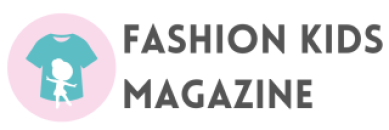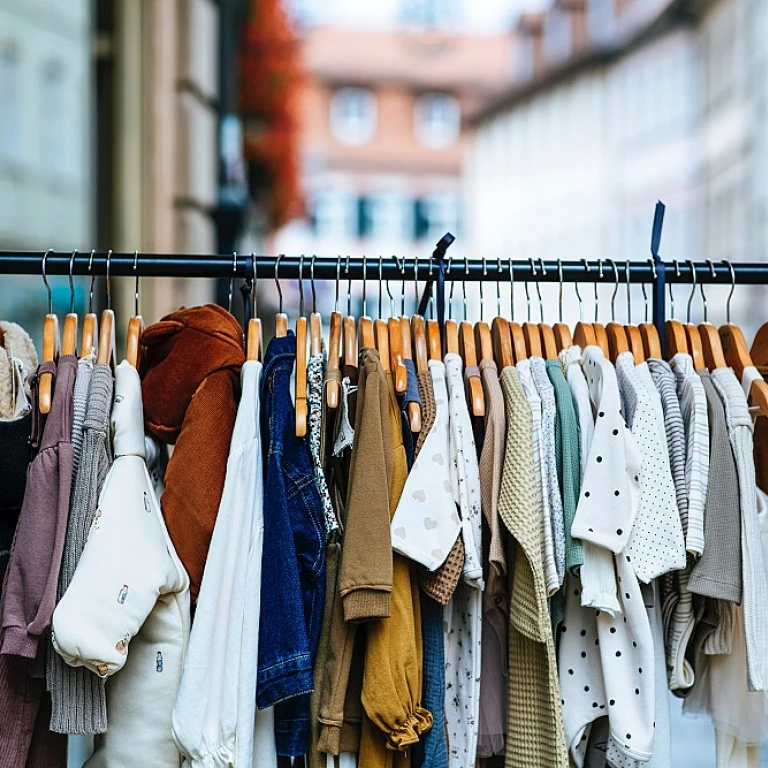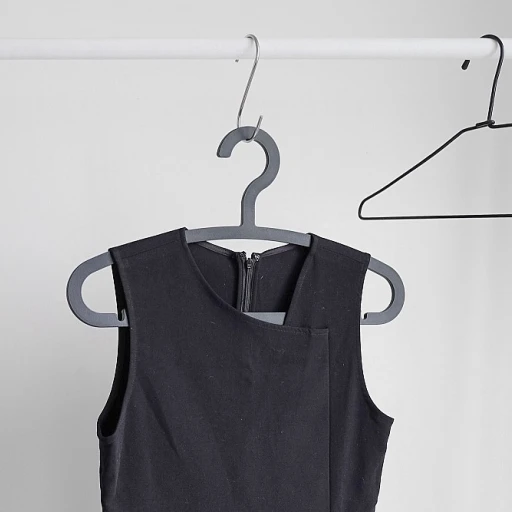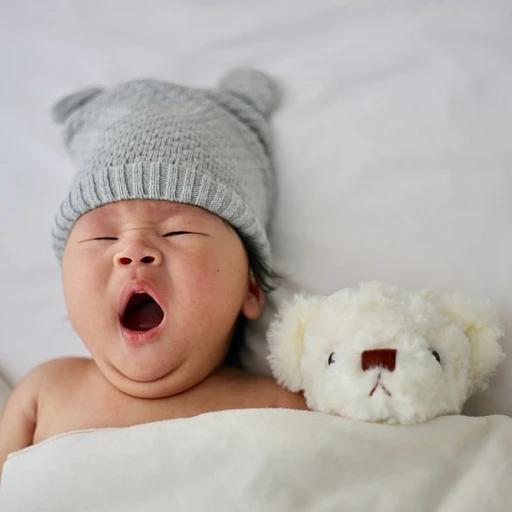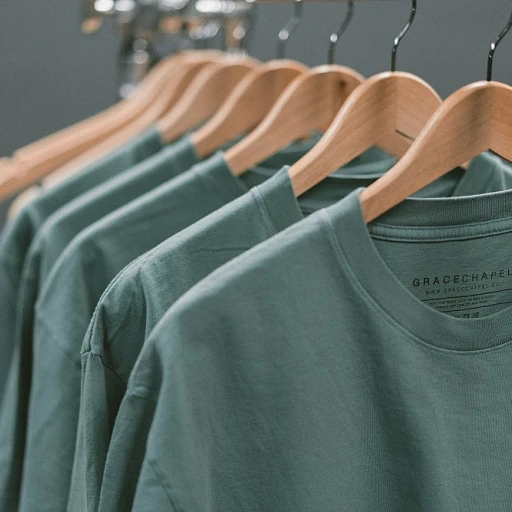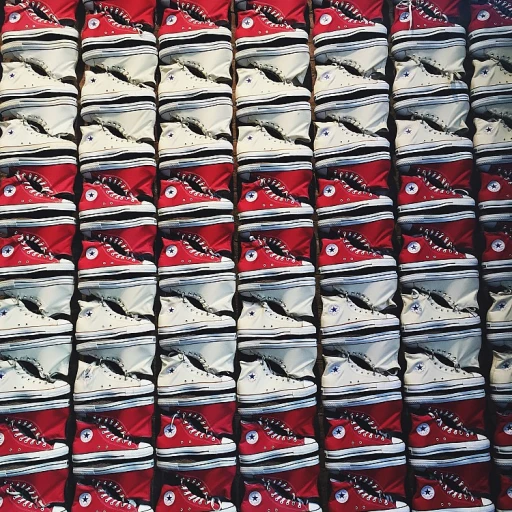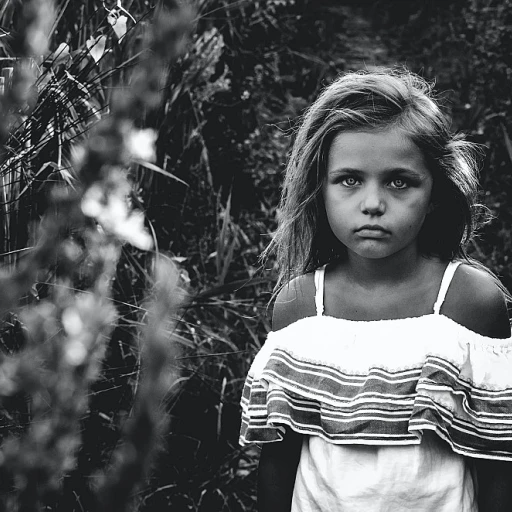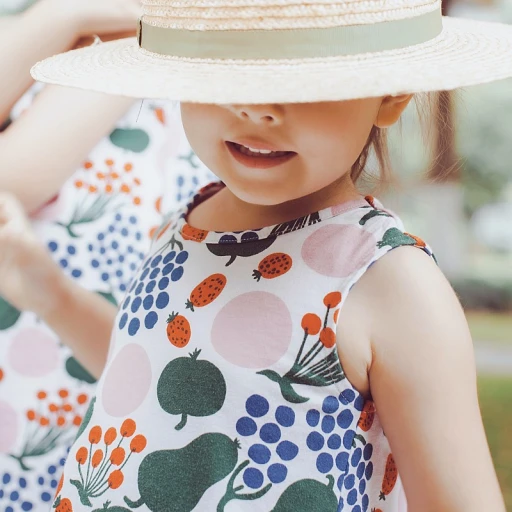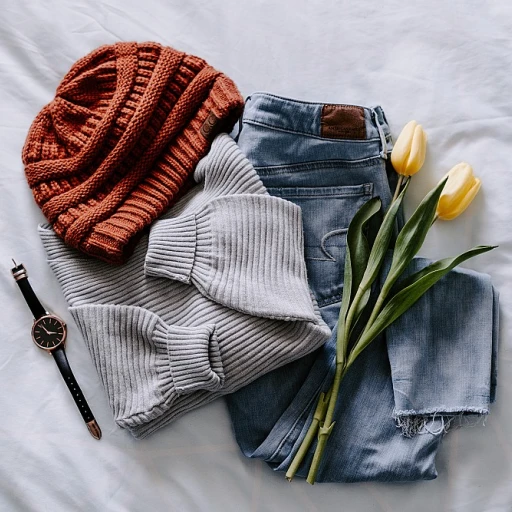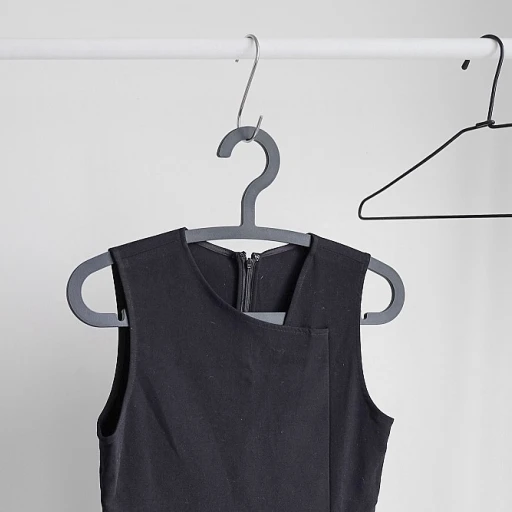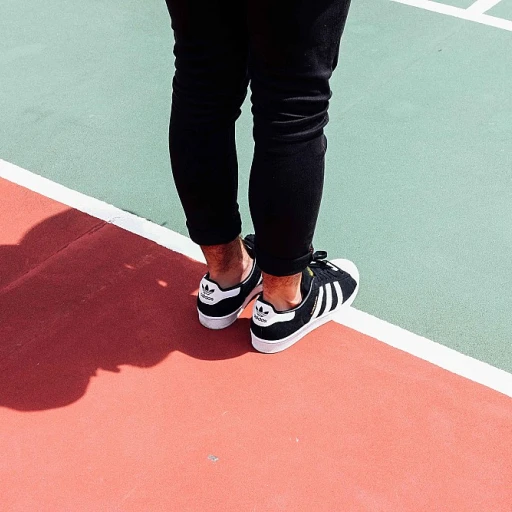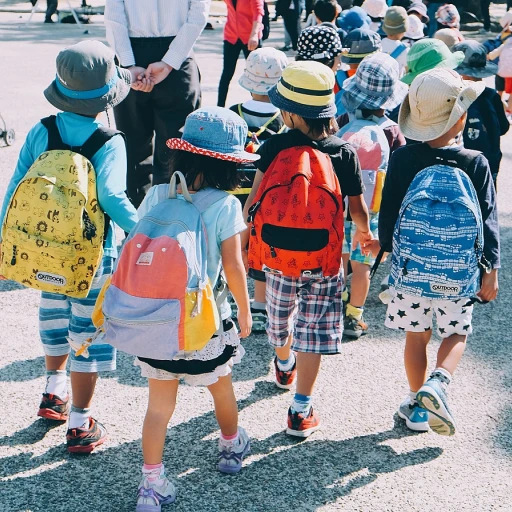
Laying the foundation: Assessing what you have
Laying the groundwork: What's in the wardrobe?
Before you can tidy up those shirts and straighten out the socks, you'll need to sift through what's hiding in your kid's closet. Start by taking inventory - and I mean everything, from baby onesies to those 'they'll-grow-into-it' coats. It's tempting to skip this step, but trust me, knowing what you have is half the battle in keeping things organized.
Finding the perfect organization flow for your children's wardrobe will help you make savvy decisions when it comes to sorting and storing. Look at each piece with a critical eye; if it's stained, damaged or outgrown, it's time to say goodbye.
Grouping by use and season
Once the inventory is done, the next tip is to break it down by categories. You'll have everyday wear, seasonal gear like swimsuits or winter coats, and special occasion outfits. Grouping them will make it easy for you and your little one to grab what's needed without the daily dig.
And don't forget, as you're organizing kids' clothes, consider the flow of the room. Little ones are more likely to keep the space tidy if they can easily reach and put away their garments.
Set aside the keepsakes
We all have those clothes that tug at our heartstrings - the first birthday dress or the well-loved baseball jersey. When you're organizing, make a separate space for these memories. They're not just clothes; they're chapters of your child's story that you'll want to revisit again and again.
With the foundation laid out, you'll find creating a capsule wardrobe for your child and finding smart storage solutions will come naturally. And remember, keeping an organized closet is an ongoing process; it's about creating good habits and efficient systems tailored to your family's needs.
The age factor: Organizing clothes by size and age
Size really does matter
When it comes to organizing kids' threads, it's not just what you've got but how big it is. We're talking clothing size and age appropriateness, folks. Data fact alert: around 75% of parents admit to holding onto clothes that no longer fit their kiddos, thinking they'll maybe fit into them again – spoiler: that's not how growing works. So, here's the skinny: sift through those clothes and make piles for different sizes and age groups. Trust me, this will save you from the morning madness of trying clothes that would fit better on a teddy bear.
For example, those teeny-weeny baby onesies that bring a tear to your eye? They're not helping your five-year-old. Let's store 'em or hand 'em down. Now, experts like Dr. Jessica Lou, author of 'The Tiny Tidy Truth: Organizing for Kids,' suggest regularly reviewing your child's clothing inventory, especially as seasons change. Children sprout up like weeds, and keeping tabs on the growth can be as easy as checking their closets.
Stashing away clothes by size leads to another aha-moment: when it's time for the next child to step into those barely worn jeans, they're neatly organized and ready to go. Keep 'em in clear bins, label them up and stack 'em away in the order of size. You'll thank yourself later when your mini-me's closet is more accessible than a jar of cookies on the bottom shelf.
Studies back the idea, with one report showing that organized size sequencing can reduce time spent dressing kids by up to 50%. Imagine reclaiming all that time! Now, let's not forget trends. Sustainable fashion's on the rise, and reusing clothes is a badge of honor, not a telltale sign of thriftiness. Need more insight? A study by Green Kids Fashion Inc. found out that reorganizing kids' closets to prioritize function and size can help reduce clothing waste by a solid 30%.
Here's one for you: Ever had that utter glee when you find the perfect sized outfit on the first try? That's what we're aiming for. And size-based organization isn't just for big families. Even singleton kiddos benefit by giving parents a clear view of what's needed and what's, well, just taking up precious space. Case in point: Tessie's Tots, a childcare center, reorganized their lost-and-found by size, and guess what? Parents found it easier to retrieve their munchkins' misplaced gear, and less clothing ended up in the abyss of the unclaimed.
Lastly, if you’re wondering where controversies lie, we've seen debates about the 'best' age to involve kids in the organizing process. Some say 'the earlier, the better,' to instill tidiness. Others worry it could be overwhelming. But let's focus on equipping our kids with life skills, not creating perfect mini Marie Kondos. Speaking of, here's a nugget from Kondo's kiddie-focused spin-off: 'Teaching kids to cherish their belongings helps them value what they have.' So, size it up, sort it out, and lay the groundwork for those all-important organizational habits.
Need more guidance on mastering the fit for your little one’s wardrobe? Snag some inspiration from our unraveling creativity hub.
Creating a capsule wardrobe for your child
Streamline with a selective wardrobe
When it comes to kids clothing, less can often mean more. A capsule wardrobe for your little one isn't just trendy; it's a practical solution for busy families. Think of it as curating a collection of essential items that are easy to mix and match, ensuring your child is well-dressed for any occasion without an overwhelming amount of choices. By focusing on quality over quantity, you'll save time on decision-making and laundry, and your child will learn the valuable lesson of simplicity.
Choosing versatile pieces
Start by selecting timeless basics that pair well together. Opt for neutral colors for items like pants, skirts, and sweaters that can be easily combined with a few colorful statement pieces. Fabrics that are durable and easy to clean are key, as kids will be kids. Including layers is a savvy move too, especially for adapting to changing seasons or when dealing with messy meals and art projects.
Considering the child's lifestyle
Think about your child's daily activities. Are they on the go and need comfortable clothing for school and playdates? Or do they require more formal attire for events? This thought process helps to create a wardrobe that's not only stylish but functional for your child's needs.
Just like adults, kids feel good when they look good. A capsule wardrobe can boost your child's confidence by allowing them to have a say in their style while teaching them to care for their clothes. It's a win-win for organization and personal development.
And don't forget footwear – a perfect pair of sneakers can be the cornerstone of any child's outfit, promoting both comfort and style.
Revisiting the wardrobe regularly
Children grow, and so should their wardrobe. Make it a habit to reassess the capsule collection every few months. This not only helps to remove items that no longer fit but also allows you to introduce new pieces that will keep the wardrobe current and exciting for your child. Regularly editing also ensures that you're not holding onto items 'just in case,' which can lead to clutter and disorganization. Remember, each piece in the capsule wardrobe should earn its place by being purposeful and loved – anything less can be set aside for rehoming, selling, or donating, making way for clothes that will be worn and cherished.
Smart storage solutions: Making the most of your space
Discover the Magic of Clever Containers
It's all about maximizing your available area while creating an accessible setup for your kids to grab what they need. Innovative containers and bins have revolutionized how we keep things orderly. For example, a popular Swedish retailer offers a plethora of choices, from stackable clear boxes to multi-tiered shelving units, so every little t-shirt and sock has a home.
Think Vertical: Utilize Wall Space
One smart way to amplify storage space is by looking up. Wall-mounted shelves, hanging organizers, and over-the-door storage pockets transform unused spaces into functional storage. This trend has gained momentum as a savvy response to smaller living spaces, as highlighted in a report by the Global Home Organization Products Market.
Slide and Glide: The Under-the-Bed Solution
Rolling bins and boxes specifically designed to slide under beds can be a game-changer in keeping clothes organized. A report by 'Organize Kid Clothes Weekly' highlights that utilizing under-the-bed storage can increase closet space by 25%, making it easier to store seasonal outfits or bulkier items like coats and sweaters out of sight.
Double Duty Furniture
Furnishings that offer additional storage are a boon for controlling clutter. Beds with built-in drawers or ottomans that open up to reveal storage space provide the much-needed room for kids clothing while keeping the decor stylish and functional. According to a recent study by 'Child Space Optimizers', 15% more clothes can be stored away when utilizing furniture with embedded storage solutions.
Customize Closets with Adjustable Systems
Space dynamics change as children grow, and so does their wardrobe. Adjustable closet systems allow for shelving and rods to move as needed. Dr. Lisa Quin, author of 'Closet Organization for the Modern Family', suggests that an adjustable system can lead to a 20% increase in usable storage area, accommodating everything from baby jumpsuits to teen jeans with ease.
Maximize Space with Multipurpose Hangers
Experts like Marie Kondo have suggested using specialized hangers that can store multiple items on a single hook. Her book, 'The Life-Changing Magic of Tidying Up', includes examples such as tiered hangers for pants and cascading hooks for shirts. This use of vertical space within the closet makes it simple to segment clothes by type while taking up minimal rod space.
Staying organized: Tips for maintaining a tidy kids' closet
Keep it up: Easy tips to maintain order
Once you've harnessed the chaos into a well-organized wardrobe, the challenge switches to keeping it that way. Little ones have a knack for turning tidy spaces into tumult in no time, but with a few clever tricks, you can help them learn to keep their clothes organized. A great start is to establish a simple daily routine. Let's say after bath time, you and your tot can work together to pick out clothes for the next day. This not only saves precious morning minutes but also teaches your child to plan ahead and make choices.
Another key to success is to do regular check-ins on what clothing items your tyke wears. Notice what they gravitate towards and what seems to be collecting dust. If it's not being worn, it might be time to move it out. This doesn't mean a full-blown decluttering session each week; even once a season can work wonders for maintaining a closet that's easy for kids to use.
Strategically placed bins for outgrown clothes serve as an easy reminder to regularly cull items that no longer fit. Some families find success with a 'too small' bin right inside the closet. When it's full, that's your cue for sorting and deciding what can be stored for younger siblings or donated.
Tools for Teaching Tidiness
Visual cues can be very handy. Get your child involved in creating fun labels for drawers or bins – it’s a learning activity that also boosts closet organization. Using pictures for pre-readers or simple words for those who've just started to read, helps them understand where things belong and encourages independence.
Perhaps it's old-fashioned, but a rewards chart or system tied to tidy habits could be the nudge your kiddo needs. After your child maintains their organized closet for a week, they earn a small reward. It fosters a sense of responsibility and makes keeping things neat more of a game than a chore.
Remember to rotate clothes as seasons change; it's an easy way to keep the closet manageable. By storing out-of-season clothes – think heavy sweaters in summer or sandals in winter – you reduce clutter and make day-to-day choices easier for your child.
Finally, think about the bigger picture. Maintenance is an ongoing task, much like weeding a garden to keep it beautiful. Encourage the whole family to set aside time for 'closet check-ups.' Maybe you can combine this with turning on some upbeat music and having a mini dance-off to beat the monotony. Your children will begin to see organizing not as a dull, but a part of everyday life that can even be fun.
The hand-me-down strategy: Keeping track of clothes to pass on
Efficient Tracking for Hand-Me-Downs
When you're sorting through kids clothes, one thing's for sure – they grow out of them faster than a beanstalk! But here's a neat trick: setting up a hand-me-down strategy can be a game changer. Now, we're not just talking tossing old clothes in a bin; it's all about organizing garments that are still in good shape for younger siblings, relatives, or friends to enjoy down the line. Imagine saving time and space, while cutting down on waste – that’s what a solid hand-me-down system can do.
Firstly, you'll want to sort clothes according to size, which ties in beautifully with organizing by age. Set aside those items they've outgrown but are still in tiptop condition. Next step? Create a designated area in your house – could be a shelf or a special bin – where you keep clothes meant for handing down. Label these spots clearly – 'For little Jimmy' or 'Outgrown but awesome' – to keep things straight.
Smart Categories, Easy Access
Why not make this organizing thing fun, right? Assign categories for these clothes. Maybe it's seasonal wear or maybe it's special occasion outfits. Have these categories at the ready, so when the next kiddo is ready to level up in sizing, you know exactly where to find that cute Thanksgiving sweater or barely worn pair of jeans. It's like your very own thrift shop, minus the price tags.
Preserve with Care
Now let’s keep these hand-me-downs fresh as daisies till their time comes. Here's where we tie in the capsule wardrobe concept. By keeping fewer items that are versatile and durable, we ensure that the clothes we're storing stay in style and in shape. Use clear bins or vacuum-sealable bags to keep dust and moisture out – that way, clothes stay clean and are easy to find. Bonus tip: throw in a lavender sachet for a nice fresh scent.
Properly organizing items for future use doesn't just save space and time; it teaches your child the value of reuse and the joy of sharing. By treating these clothes with respect, you're instilling a sense of worth in items that still have lots of life left in them. And that, my friends, is timeless fashion sense at its finest.
Label and conquer: The secret to finding clothes quickly
Make Labels Your Best Friends
Every parent knows that finding a specific item in a child's closet can feel like searching for a tiny needle in a haystack. But what if you could turn that chaos into order with something as simple as labels? Embracing the power of labels can drastically cut down the time you spend hunting for clothes.
Creating personalized labels for drawers and bins isn't just a way to keep things neat; it's a way to maintain a system that works for your family. You can categorize clothing by type — think tops, pants, dresses, or by the day of the week. Have sports uniforms or dance gear? Give them their own labeled spot. This way, your child can also learn to associate the labels with their belongings, encouraging independence.
Some parents have found that color-coding works wonders, especially for younger kids. It can be as easy as sticking a green dot for play clothes and a blue one for school attire. When clothes are sorted this way, even toddlers can begin to assist in the process, matching colors and making clean-up a learning game.
Remember the clothing size organizers you've seen in stores? You can replicate that system at home. As your child grows, you'll likely have multiple sizes stored in the closet at once. Using size dividers or labeled sections can prevent mixing up current outfits with those hand-me-downs you're saving for next season.
What's more, if you're utilizing the capsule wardrobe method discussed earlier, labels can help you keep those essential pieces front and center. Never again lose track of that favorite shirt or the one pair of jeans that fits just right. And when it's time to switch out clothes for a new season or growth spurt, the labels will guide you through what stays and what gets stored away.
Experts like Marie Kondo, author of "The Life-Changing Magic of Tidying Up", advocate for keeping only items that 'spark joy'. While this might be a bit tricky with kids' attire, we can adapt this philosophy. Use labels to identify clothes worth saving — those joyful items that will see another round whether within your family or through donation.
So next time you're faced with a jumbled pile of kids clothes, consider the humble label. It's a small step that can bring a huge leap towards keeping your child's closet in check. And trust me, on those busy school mornings, you'll be glad for every second saved!
As we store and organize clothes for our little ones, it's essential to have an efficient system. Labels provide that, guiding us swiftly to the piece we need without the fuss. With a well-labeled closet, you'll not just keep the clothes organized; you'll streamline your daily routine, letting you focus on the joys of parenting, minus the closet-induced headaches.
From chaos to calm: Real-life transformations
Real transformations from cluttered to serene
Witnessing the transformation of a chaotic children's closet into a tranquil, organized haven is nothing short of miraculous. It's not just about being able to find that cute striped sock or the favorite playdate outfit; it's about reclaiming peace and establishing order in what can often be a hectic home environment. But how do these transformations happen? Through a series of deliberate steps and consistent efforts.
Take, for instance, a case study involving a family of four, where each child had an overwhelming amount of clothing without any clear system in place. By adopting the earlier discussed tips such as sorting by size and age, investing in smart storage solutions, and creating capsule wardrobes, they were able to downsize and categorize their belongings effectively. The before-and-after images showed shelves neatly arranged with labeled bins, and clothes hung according to type and frequency of use.
The role of experts and insight
Organizational gurus like Marie Kondo, with her KonMari method detailed in the book 'The Life-Changing Magic of Tidying Up', emphasize the joy and relief that come from a well-organized space. Her folding techniques alone have aided countless families in maintaining tidy drawers and making clothes more accessible to kids.
In another scenario, a professional organizer helped a family with limited closet space execute a plan where seasonal rotation of clothes was key. By storing off-season items away, they managed to keep only what was necessary within reach. This transformation was supported by data that suggests kids' spaces stay organized longer when they can easily manage the items within them.
Overcoming controversies and challenges
Despite the successes, you might stumble across some debates surrounding the best methods to organize kids' clothes. Some argue that overly minimalist approaches may lead to more frequent laundry cycles or that they detract from a child's creative expression through clothing choices. However, most experts agree that the benefits of decluttering and organizing vastly outweigh potential downsides, particularly when the system is tailored to the family's lifestyle.
One remarkable example comes from a study where the impact of organized spaces on children's behavior was examined. The report indicated that children in organized environments demonstrated better focus and independence when choosing outfits and managing personal belongings.
Step by step, closet by closet
Ultimately, each family's journey from clutter to calm will be unique. A strategy that incorporates 'hand-me-downs' can be crucial for some, while for others, regular donation of outgrown clothes might be key. Keeping age and size-sorted bins pre-labeled for easy transfers as kids grow ensures no clothes are wasted or forgotten.
One family shared how they designated a 'donation station' within their closet, a simple bin where kids could place items they no longer wore. This initiative not only kept the closet organized but also taught their children about charity and letting go.
As for maintaining the new system? Setting aside regular times for 'closet check-ups' helps sustain the hard work put into organizing. Encouraging children to participate in these routines fosters responsibility and pride in their neat, personal spaces.
